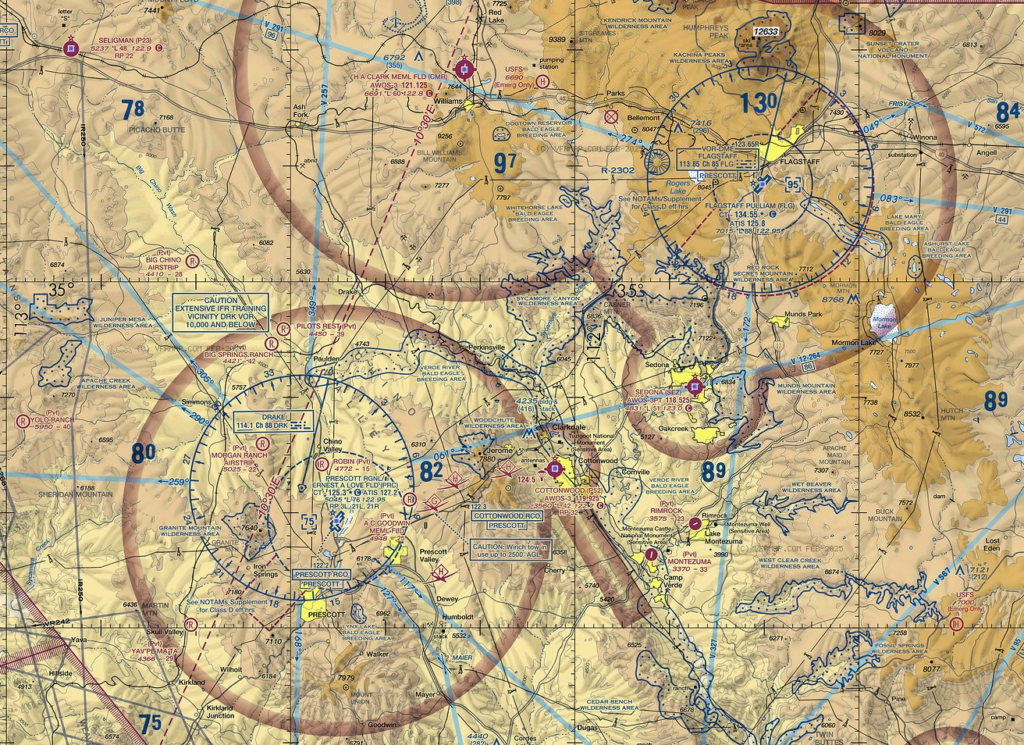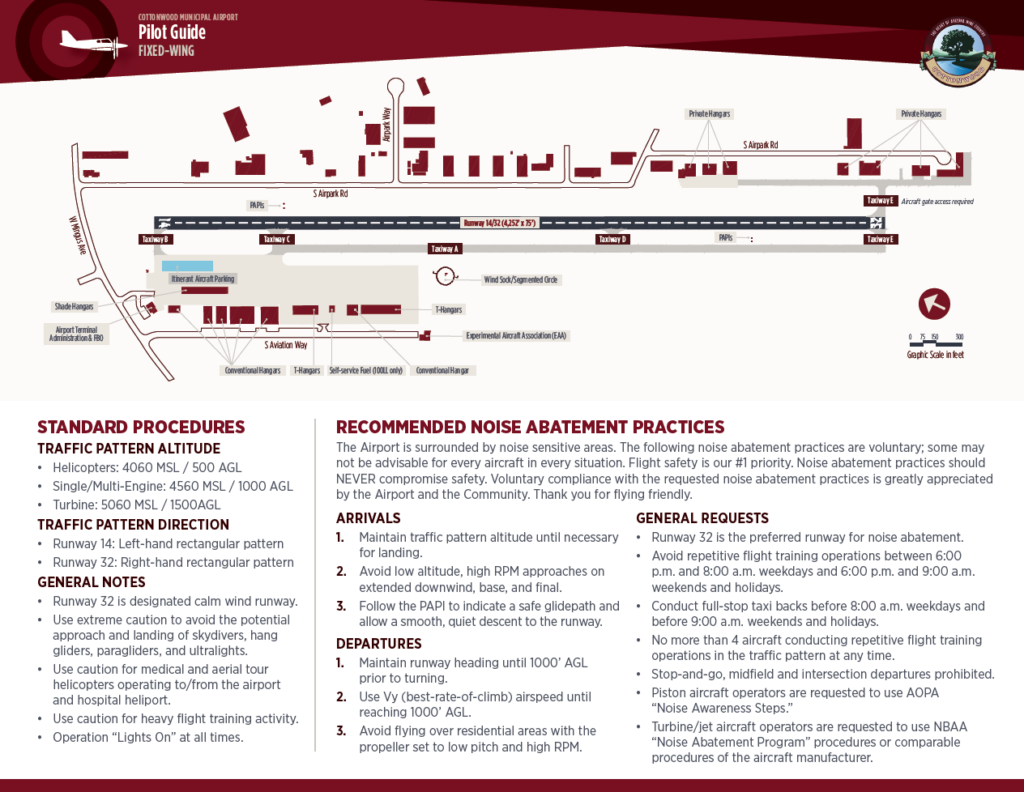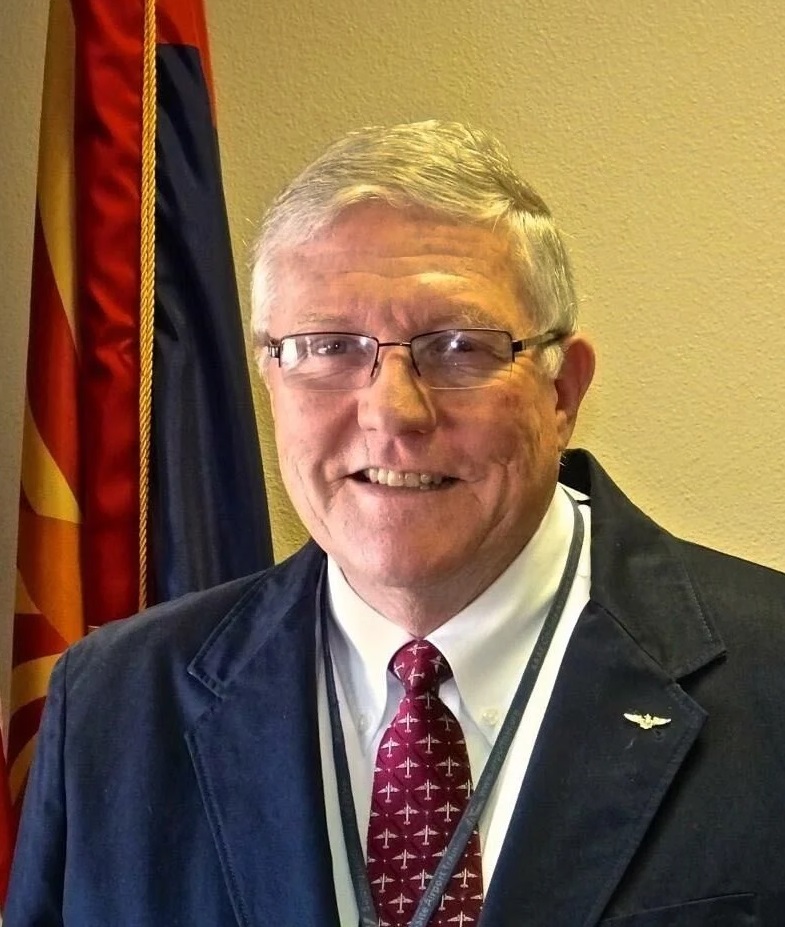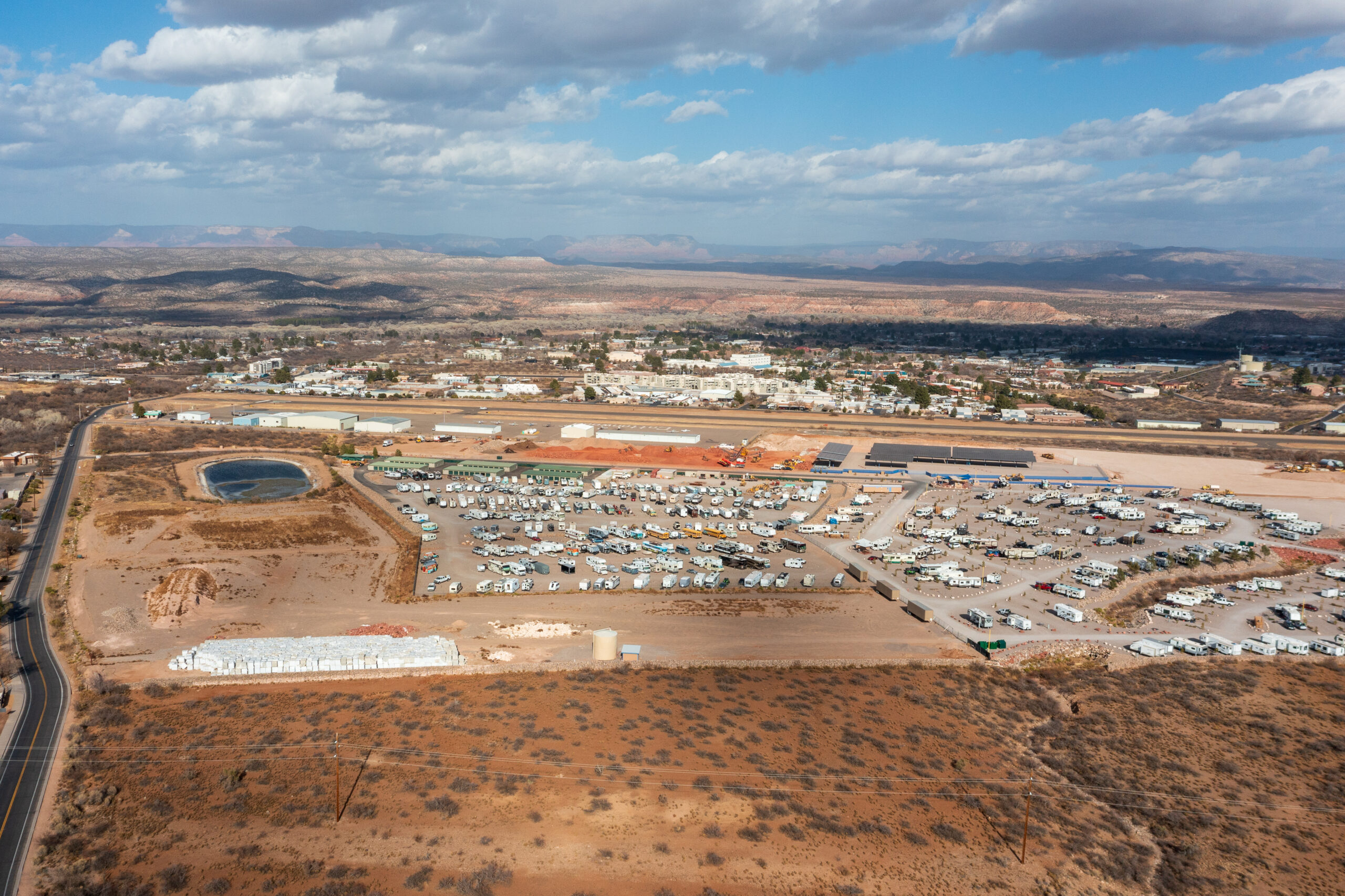The Cottonwood City Council held a work session on Feb. 10 to discuss a Dec. 10 resolution passed by the Clarkdale Town Council requesting that Cottonwood take action to address complaints from Clarkdale residents about flight training at the Cottonwood Airport.
The resolution asked that the Cottonwood Airport:
▪ Reestablish a calm wind runway for southernly departures
▪ Reestablish a crosswind turn at 700 feet
▪ Partner with Clarkdale to request that all flight training schools address the noise from flight training and implement a “Fly Friendly Agreement” program
▪ Request the FAA fund and execute a Part 150 noise study to measure airport noise perceptible by Clarkdale residents and take action to mitigate that noise
▪ Reconvene the Noise Working Group

Clarkdale’s Presentation
Clarkdale Mayor Robin Prud’Homme-Bauer requested the opportunity to present the resolution to the Cottonwood City Council.
“This resolution is coming to you from the Clarkdale Town Council with the honest belief that we can collaboratively and openly work together on items outlined in our resolution,” Prud’Homme- Bauer said. “We are not here tonight to demand or to be unfriendly about this situation. This is not the way we operate. We operate as neighbors. Our communities have a long history of working together in partnership on many items.”
Prud’Homme-Bauer quoted from the Clarkdale Town Council’s minutes from November 2018 meeting, during which Cottonwood staff presented proposed changes to airport operating procedures to the Clarkdale council, which requested that Cottonwood reject the changes on the grounds that they would be detrimental to Clarkdale residents.
Prud’Homme-Bauer also said that in November 2018, Cottonwood city staff had mapped noise complaints from Clarkdale residents and plotted anticipated future complaints if the traffic pattern were to be changed, which she said had revealed an anticipated increase in air traffic over Clarkdale.
Prud’Homme-Bauer further said that an August 2019 Cottonwood memo outlining planned changes to airport operations, including the traffic pattern altitude, was never shared with Clarkdale, and said that she met with Embry-Riddle Aeronautical University Chancellor John Watret and a senior vice president, who she said had told her they were purchasing land for a new airport and whom she asked to diversify the airports their students use.

Cottonwood Discussion
Cottonwood Deputy City Manager Rudy Rodriguez said that city staff have met with Parker Northrup, the head of ERAU’s flight department, to discuss the lack of use of Seligman and Bagdad airports for flight training; Northrup informed them that those fields lack support services such as firefighters and police that are available in Cottonwood, which could respond in an emergency.
Prud’Homme-Bauer said the issue of safety at alternate airports was never brought to Clarkdale staff’s attention.
Rodriguez said that the new airport manager, Rob Propst, will start on Monday, March 3, and an Airport Commission meeting will be held on Wednesday, March 5, to discuss the crosswind turn and introduce Propst.
“I am hopeful that our new airport manager will be instrumental in helping us find answers to this so that we can move forward in an effective way and alleviate some of the strain that people are feeling from these repeated flights,” Mayor Ann Shaw said.
Councilwoman Felicia Coates pointed out that the exposure maps and noise abatement options produced by a noise study would remain voluntary and asked if a noise study would actually be helpful since the airport already has noise abatement guidance in place.
Rodriguez said he believed it may give them more options not previously considered.
Shaw asked Rodriguez how the airport manager would be able to help mitigate noise and Rodriguez said that there would be an advantage to having someone on site with lots of experience, especially with noise abatement, who would be people-friendly and able to talk to others.
Councilman Chris Dowell said that the city shouldn’t flip the direction of the runway and affect people on the opposite end, as city leaders would then be in the same place. Rodriguez said flights in either direction will result in noise complaints, but the best option would be to have another runway and distribute flights elsewhere.
Clarkdale Town Manager Susan Guthrie said that Cottonwood had an aviation easement over the area affected by air traffic so prospective home buyers are aware. Clarkdale did not have such an aviation easement, as previous town staff did not believe there would be noise complaints. Guthrie argued that changing the pattern turn to a lower altitude would keep aircraft closer to the original pattern and to areas where the aviation easement exists.
“The hardest thing for me to have to hear was a Clarkdale resident telling me that he was not going to start his businesses in Clarkdale … because of the aircraft noise,” Prud’Homme-Bauer said. “That’s heartbreaking to me … I’ve lost a resident. I’ve lost a potential business. That’s where it gets to me.”
Interim Cottonwood City Manager Tom Whitmer said that city staff have met with U.S. Sen. Mark Kelly’s office and secured their support for having ERAU build an alternative airport north of Prescott in the Drake Smith Plant area, but pointed out that the proposed site is on U.S. Forest Service land, which entails additional planning requirements. Kelly’s staff also believed they would not find anyone who would run and operate the airport if constructed.
Prud’Homme-Bauer said that ERAU’s COO had told her that ERAU will be managing the facility.
Shaw said that she wanted to ensure that the problems were not pushed somewhere else and that she wanted to help everyone at once.
Cottonwood City Council took no action on Clarkdale’s request.
Cottonwood-P52-Pilot-Guide_Fixed-Wing_72123New Cottonwood Airport Manager Rod Propst
The city also announced the hiring of a new airport manager, Rod Propst, who was previously the general manager of the Sedona Airport from 2012 to 2015.

File photo/Larson Newspapers
Probst said in an exit interview that during his two-year tenure at Sedona Airport, he “was able to increase profits by nearly $200,000 in calendar year 2014 and present the board with a conservative and balanced 2015 operating and capital improvement budget with a 10 percent reserve.”
“I am pleased with what I accomplished in my two years at the Sedona Airport, including nearly $3 million in capital improvements, new operating procedures, initiating a new airport master plan update and answering difficult noise and safety questions that the constituents surrounding the airport had. I grew professionally and particularly enjoyed the entrepreneurial portion of the airport business,” Propst said.
Propst left Sedona to become deputy director for airports in San Diego, Calif. In 2019, he was hired by Pierce County, Wash., to serve as airport manager and assistant ferry administrator overseeing Tacoma Narrows Airport and Thun Field and ferries to Anderson Island and Ketron Island, in the South Basin of Puget Sound.
Regarding airport advisory commissions and committees, Propst said in 2015, “You need a mix of both users and tenants and constituents that live around the airport that represent those communities.”
“I can remember one of the complaints that I would get when I would go to different meetings in the city of Sedona is the constituents and the folks that lived downtown felt that they have no vehicle, no avenue to even approach the airport about what was even going on,” Propst said. “Some folks have the outlook that the airport is a private country club and that they are not accountable or responsible to anyone. That’s a very dangerous setting for an organization to have.
“My approach was that you have some type of an advisory board made up of different stakeholders that are affected by the airport and allow them to be part of the decision-making process.”



